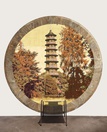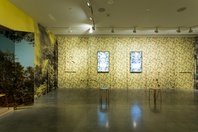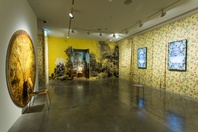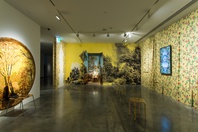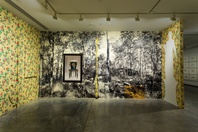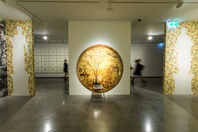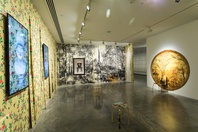Gary Carsley
2017
Displayed 2017 at Museum of Contemporary Art Australia
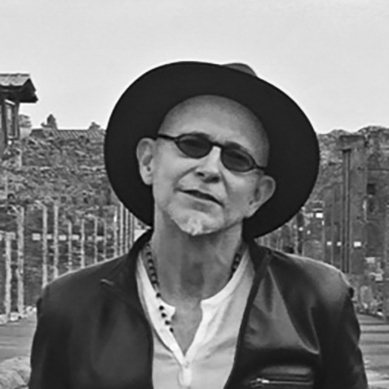
Gary Carsley
Born 1957, Brisbane. Lives and works Sydney
With an abiding interest in the handmade, the complex and the arcane, Gary Carsley seeks to recontextualise labour as a highly refined conceptual act rather than a devalued manual process. Parallel histories and the multiverse are compelling realities for him, and in his studio practice subcultural models of artistic production such as karaoke, lip-synching and ventriloquism are deliberate rhetorical strategies that draw on the histories of resistance in marginalised communities. Carsley’s work reflects his understanding of memory as a prophylaxis useful in the development of Trans images operating outside the fixed binaries of art and craft or the old and new.
Artist text
by Russell Storer
Gough Whitlam’s 1972 campaign speech at Blacktown Civic Centre remains one of Australia’s greatest examples of political rhetoric. In this rousing oration Whitlam laid out an ambitious program that set the nation on a progressive direction away from the conservative Menzies era, with policies including Aboriginal land rights, equal pay for women and free tertiary education. For many, Whitlam’s three short years in government were a moment when a fresh narrative for Australia was written, and while aspects of his vision remain in place, today economic rationalism has substantially eroded much of its substance. Amid rising inequality and xenophobia, our current electoral mode offers us mindless three-word sound bites; Whitlam’s optimistic eloquence now seems impossibly outdated.
This speech and its 1974 counterpart form the soundtrack for Gary Carsley’s new installation at the Museum of Contemporary Art Australia. The words are lip-synched by the artist, his mouth overlaid onto a marble bust of Cicero, the Roman orator and politician. Like a drag queen’s performance, the video is a mashup of personae, linking Whitlam’s words to the western tradition of humanist rhetoric. Whitlam/Cicero/Carsley enunciates a receding viewpoint, framed by an ersatz domestic environment in which each element, from windows and doors to wallpaper and furniture, is constructed from digital images. Carsley reimagines the trappings of a bourgeois lifestyle first introduced to Australia from Europe in the colonial era that is fuelled by the exploitation of its natural resources and infused with value by consumer culture. He transforms unique objects into infinitely reproducible data, and undermines their authority by opening them up to new interpretations.
One of the selected pieces of furniture is an Australian red cedar hall chair, c.1830, now on display in Elizabeth Bay House, Sydney. Carsley has placed a photograph of the chair on the pale ground reminiscent of an auction catalogue, the supposedly neutral context that best presents valuable items. The wooden chair is digitally overlaid with a pietra dura image of two Paradise parrots, a species once plentiful across the border areas of New South Wales and Queensland that was driven to extinction in the early 20th century. The various
stone surfaces have been scanned from marble photographed at the Rijksmuseum and the Royal Palace in Amsterdam, the floor of which features an inlaid map of Australia. This dense accumulation of disparate references is unified by Carsley’s interest in artifice – made more acute in this moment of almost total mediatisation – which enables him to rework facets of material culture to disrupt hierarchies of value.
The installation also features examples of Carsley’s signature Draguerreotypes, in which he remakes photographs of parks and gardens using digital intarsia. These constructed versions of nature are re-created from layered scans of wood contact adhesive, then displayed as prints or adhered to IKEA furniture. Carsley often deploys the term ‘drag’ as a metaphor for European-Australian culture, where originality is impossible and its most successful products, from cover bands to Dame Edna, have been imperfect copies. As in queer performance, this perspective opens out into a more generous space of ambivalence, creating the potential to break down divisions of gender, sexuality, culture and class, so that some equal ground can be staked. Slyly but surely, and 45 years after Whitlam’s landmark address, Carsley suggests that it’s time to claim this ground again.
